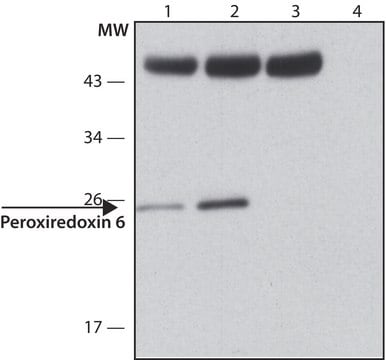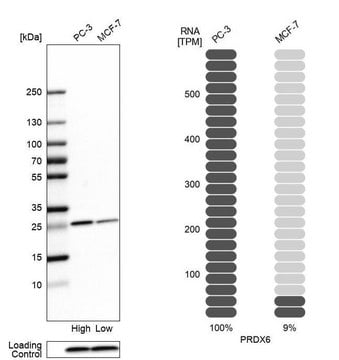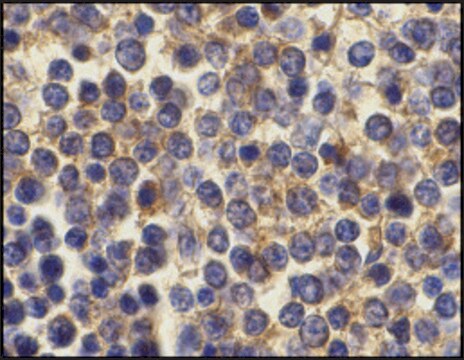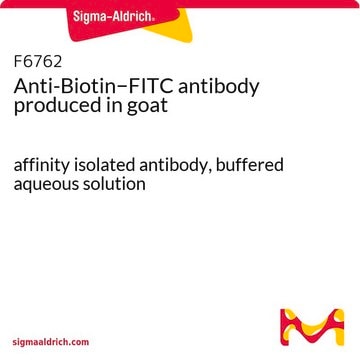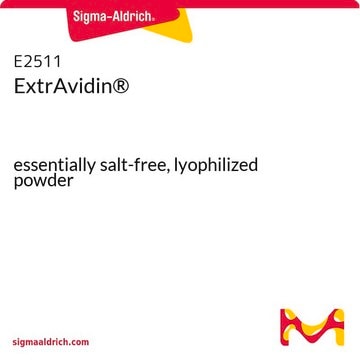MABN1797
Anti-Prdx-6 Antibody, clone TAG-2A12
clone TAG-2A12, from mouse
Sinónimos:
Peroxiredoxin-6, EC: 1.11.1.15, 1-Cys peroxiredoxin, 1-Cys PRX, 24 kDa protein, Acidic calcium-independent phospholipase A2, aiPLA2, Antioxidant protein 2, Liver 2D page spot 40, Non-selenium glutathione peroxidase, NSGPx
About This Item
Productos recomendados
origen biológico
mouse
Nivel de calidad
forma del anticuerpo
purified immunoglobulin
tipo de anticuerpo
primary antibodies
clon
TAG-2A12, monoclonal
reactividad de especies
human
envase
antibody small pack of 25 μg
técnicas
flow cytometry: suitable
immunocytochemistry: suitable
immunofluorescence: suitable
immunoprecipitation (IP): suitable
western blot: suitable
isotipo
IgG1κ
Nº de acceso NCBI
Nº de acceso UniProt
Condiciones de envío
ambient
modificación del objetivo postraduccional
unmodified
Información sobre el gen
human ... PRDX6(9588)
Descripción general
Especificidad
Inmunógeno
Aplicación
Immunocytochemistry Analysis: A representative lot detected Prdx-6 in Immunocytochemistry applications (Ding, V., et al. (2014). MAbs. 6(6):1439-52).
Flow Cytometry Analysis: A representative lot detected Prdx-6 in Flow Cytometry applications (Ding, V., et al. (2014). MAbs. 6(6):1439-52).
Immunofluorescence Analysis: A representative lot detected Prdx-6 in Immunofluorescence applications (Ding, V., et al. (2014). MAbs. 6(6):1439-52).
Western Blotting Analysis: A representative lot detected Prdx-6 in Western Blotting applications (Ding, V., et al. (2014). MAbs. 6(6):1439-52).
Flow Cytometry Analysis: A representative lot detected Prdx-6 in human corneal endothelial cells from a donor. (Courtesy of Dr. Vanessa Ding, Ph.D. and Dr. Andre Choo, Ph.D, BTI, Singapore).
Neuroscience
Calidad
Isotyping Analysis: The identity of this monoclonal antibody is confirmed by isotyping test to be human IgG1 .
Descripción de destino
Forma física
Almacenamiento y estabilidad
Otras notas
Cláusula de descargo de responsabilidad
¿No encuentra el producto adecuado?
Pruebe nuestro Herramienta de selección de productos.
Código de clase de almacenamiento
12 - Non Combustible Liquids
Clase de riesgo para el agua (WGK)
WGK 1
Punto de inflamabilidad (°F)
Not applicable
Punto de inflamabilidad (°C)
Not applicable
Certificados de análisis (COA)
Busque Certificados de análisis (COA) introduciendo el número de lote del producto. Los números de lote se encuentran en la etiqueta del producto después de las palabras «Lot» o «Batch»
¿Ya tiene este producto?
Encuentre la documentación para los productos que ha comprado recientemente en la Biblioteca de documentos.
Active Filters
Nuestro equipo de científicos tiene experiencia en todas las áreas de investigación: Ciencias de la vida, Ciencia de los materiales, Síntesis química, Cromatografía, Analítica y muchas otras.
Póngase en contacto con el Servicio técnico